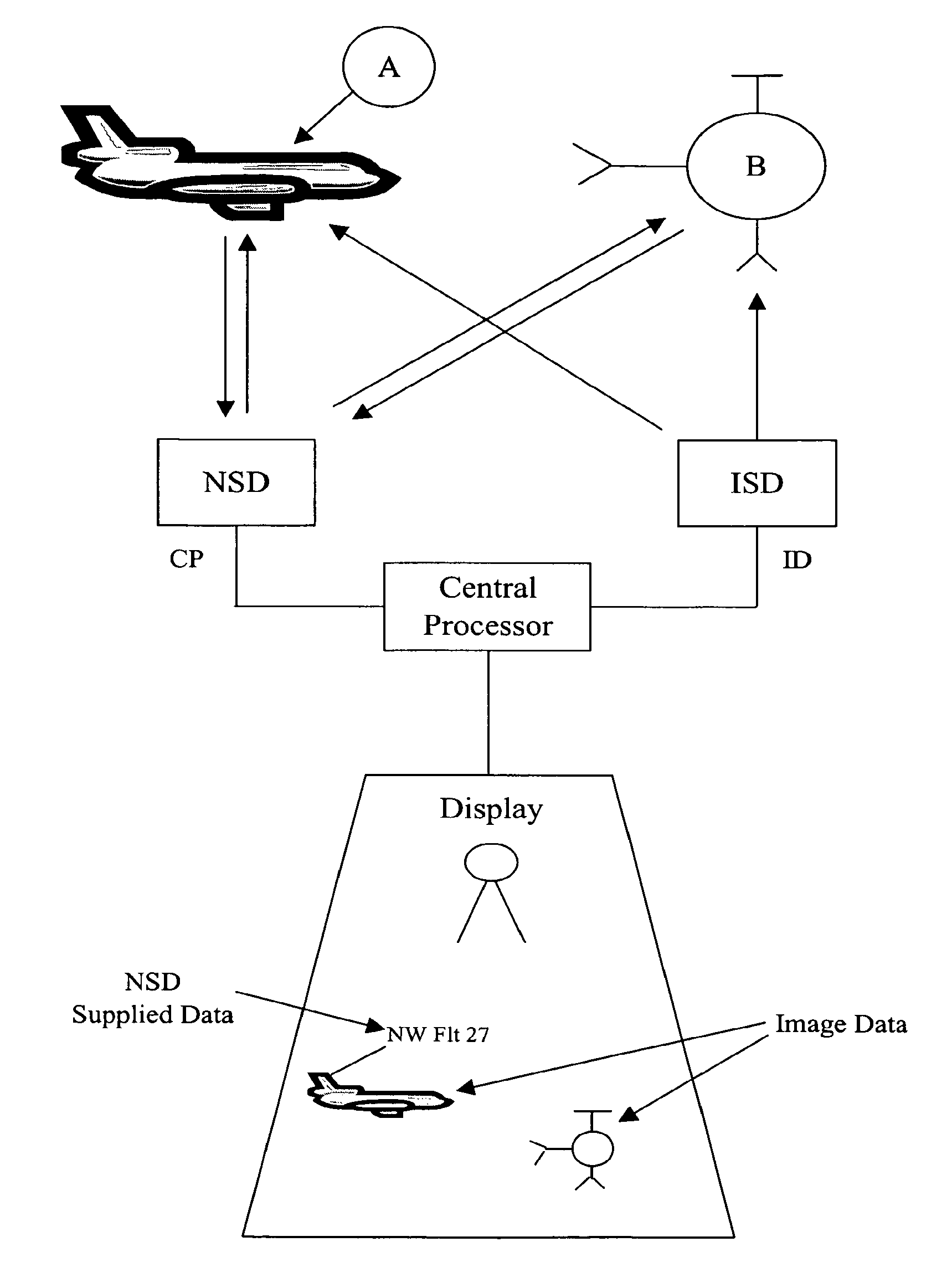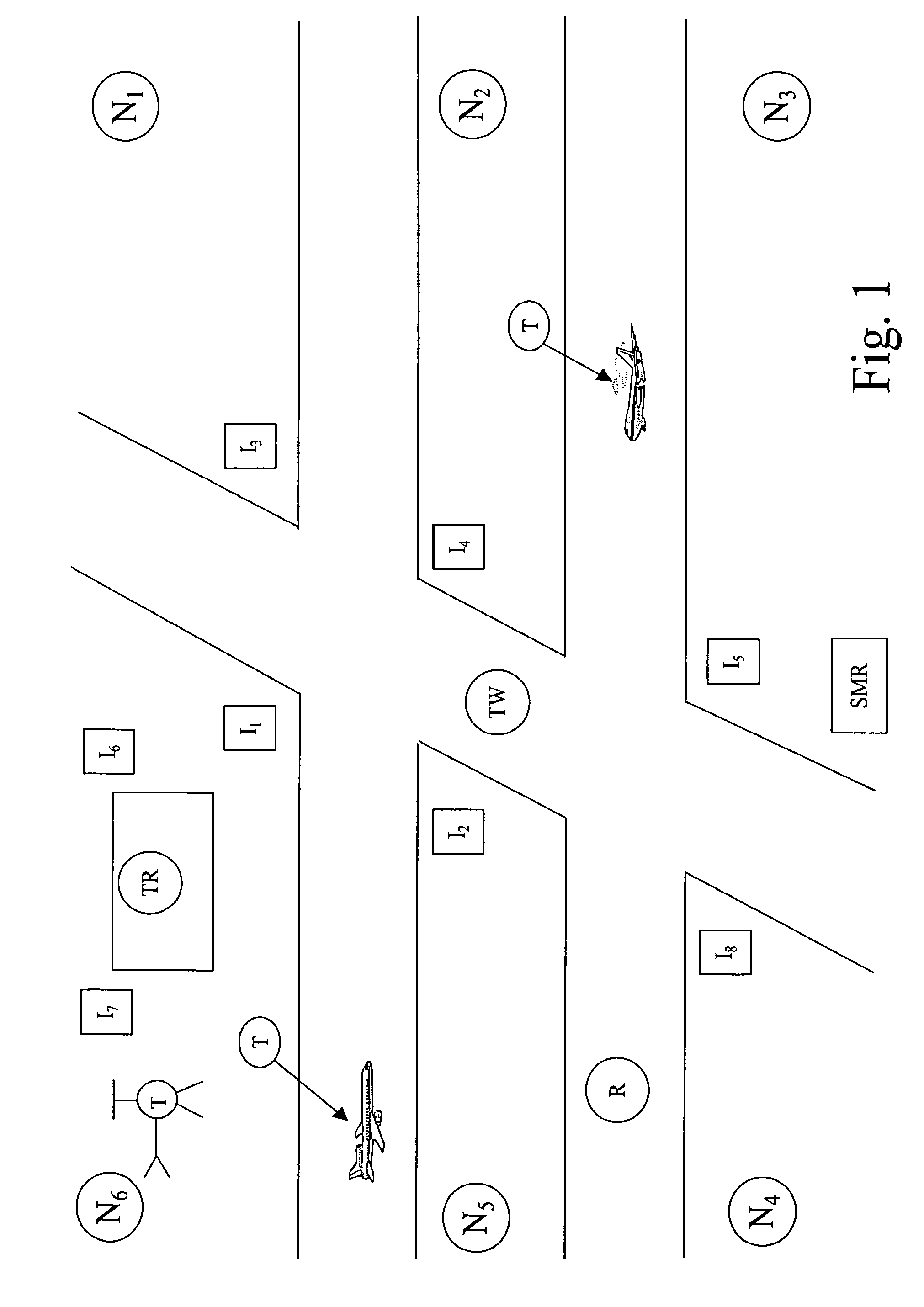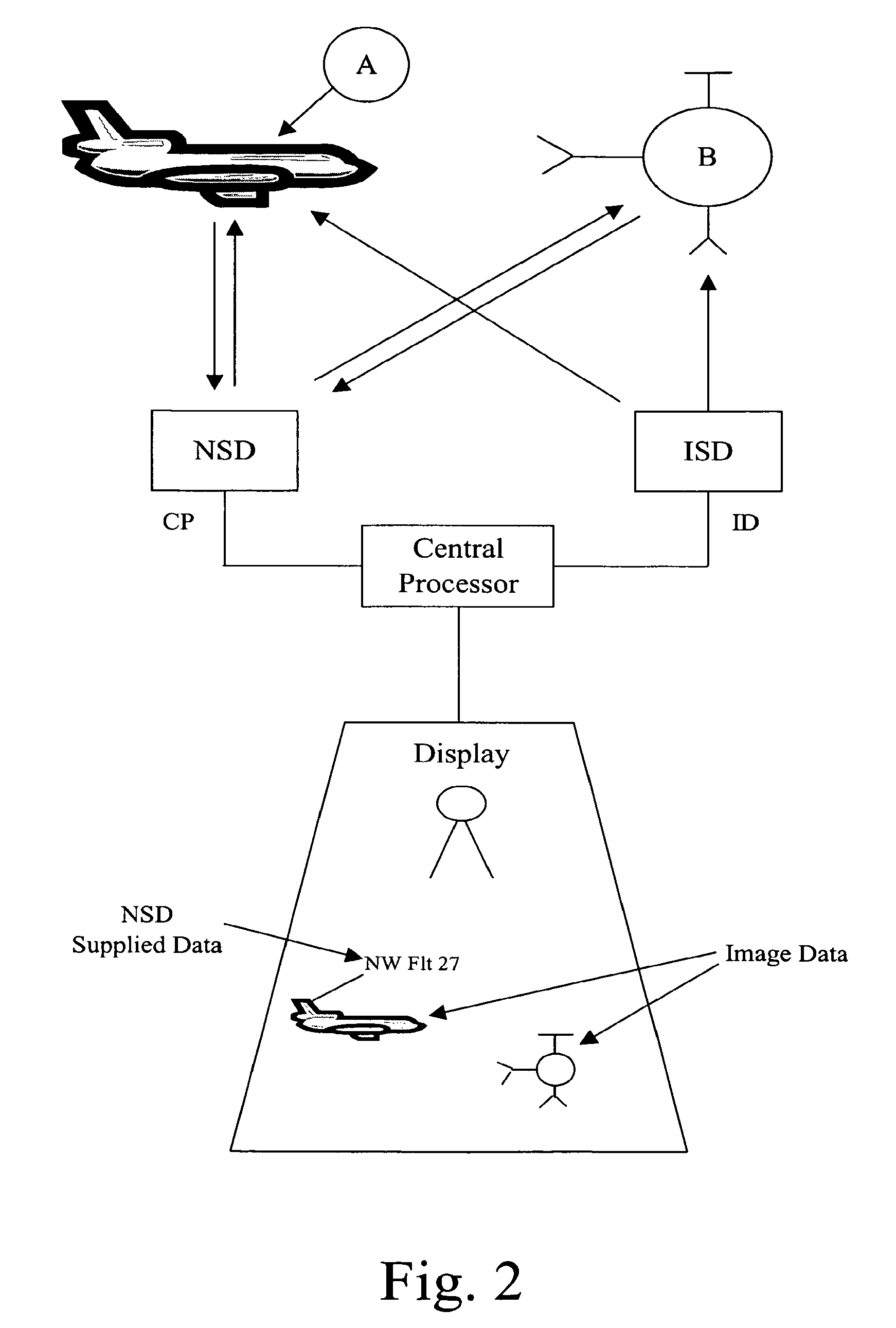Method and system for tracking position of an object using imaging and non-imaging surveillance devices
a technology of non-imaging surveillance and tracking position, applied in the field of method and system for tracking the position of an object using imaging and non-imaging surveillance devices, can solve the problems of limiting the capacity of the aviation system, the number of runways, the extent of the navigational and air traffic control (atc) facilities, etc., to facilitate full utilization of existing capacity, facilitate the operation of safe operations, and facilitate the effect of his/her responsibility
- Summary
- Abstract
- Description
- Claims
- Application Information
AI Technical Summary
Benefits of technology
Problems solved by technology
Method used
Image
Examples
Embodiment Construction
[0049]FIG. 1 is a plan view of a hypothetical airport setting to describe the method and system of the present invention. The airport includes a terminal (TR) located near runways (R) and taxiways (TW) on which aircraft and supporting ground vehicles travel. A plurality (N1-N6) of non-imaging surveillance devices (NSDs) are positioned at known locations around the airport. A plurality (I1-I8) of imaging devices (ISDs) are also positioned at known locations around the airport. FIG. 1 also shows a surface movement radar (SMR) which is used to detect the presence of aircraft and vehicles in and around the airport.
[0050]The NSDs used in the present invention can include any type of terrestrial or space-based surveillance device that does not rely upon imaging to detect the presence of a target. The NSDs can be either “cooperative” surveillance devices, in that they rely upon transmissions emitted from a target itself to detect the presence and position of the target, or “non-cooperative...
PUM
 Login to View More
Login to View More Abstract
Description
Claims
Application Information
 Login to View More
Login to View More - R&D
- Intellectual Property
- Life Sciences
- Materials
- Tech Scout
- Unparalleled Data Quality
- Higher Quality Content
- 60% Fewer Hallucinations
Browse by: Latest US Patents, China's latest patents, Technical Efficacy Thesaurus, Application Domain, Technology Topic, Popular Technical Reports.
© 2025 PatSnap. All rights reserved.Legal|Privacy policy|Modern Slavery Act Transparency Statement|Sitemap|About US| Contact US: help@patsnap.com



